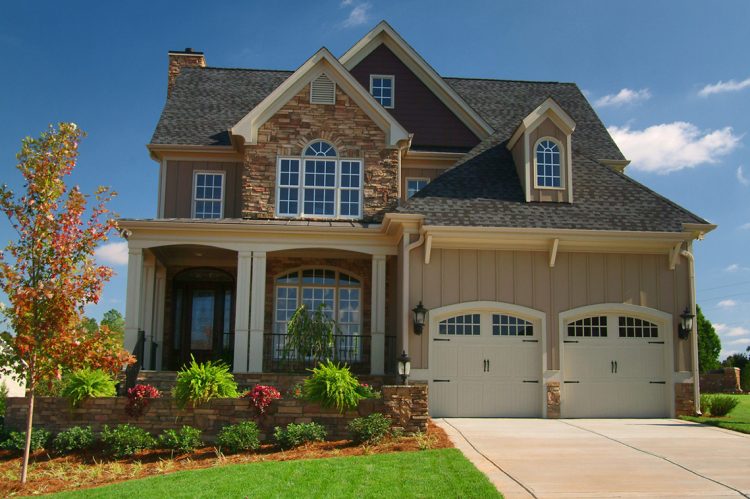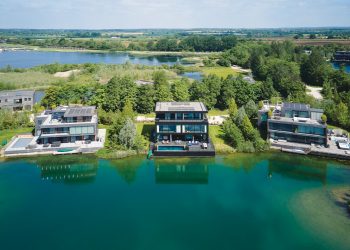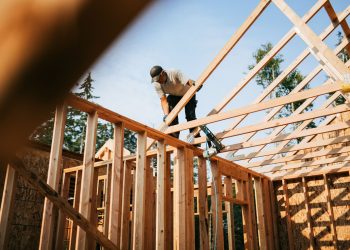Single-family housing starts declined further in September as high mortgage rates, ongoing building material production disruptions and flagging demand stemming from rising affordability challenges continue to put a damper on new home production.
According to a new report from the U.S. Department of Housing and Urban Development and the Census Bureau, overall housing starts decreased 8.1% to a seasonally adjusted annual rate of 1.44 million units in September.
Key highlights:
- Single-family starts decreased 4.7% to an 892,000 seasonally adjusted annual rate. Year-to-date, single-family starts are down 5.6%.
- The multifamily sector, which includes apartment buildings and condos, decreased 13.2% to an annualized 547,000 pace.
- On a regional and year-to-date basis, combined single-family and multifamily starts are 3.9% higher in the Northeast, 1.2% lower in the Midwest, 3.6% higher in the South and 3.4% lower in the West.
- Overall permits increased 1.4% to a 1.56 million unit annualized rate in September and are up 0.3% on a year-to-date basis.
- Single-family permits decreased 3.1% to an 872,000 unit rate. The pace of single-family permits has now declined for seven consecutive months.
- Multifamily permits increased 7.8% to an annualized 692,000 pace.
- Looking at regional permit data on a year-to-date basis, permits are 2.8% lower in the Northeast, 1.5% higher in the Midwest, 1.4% higher in the South and 1.6% lower in the West.
- The number of single-family homes under construction—800,000—is slowing due to prior declines for starts.
What this means for the market:
NAHB Chief Economist Robert Dietz commented:
“The ongoing decline for single-family construction mirrors weakness for single-family builder sentiment, which has now declined for 10 straight months and stands at half the level of a year ago. The September single-family production level is below a 900,000 annualized rate and the lowest level since May 2020.”
NAHB Chairman Jerry Konter, a home builder and developer from Savannah, Georgia, added to this statement that “higher interest rates are hurting the ability of buyers to purchase a new home, particularly at the entry-level end of the market. Higher rates also harm the supply-side of the market by increasing the cost of construction and development loans.”
National Association of REALTORS® Chief Economist Lawrence Yun commented:
“It is understandable for homebuilders to be cautious in light of slowing home sales and some recent private sector data that indicates softening lease signings for new apartments. Nonetheless, the latest monthly annualized rate of 1.44 million is lower than the historical average of 1.5 million, which is necessary to accommodate the rising population. Moreover, nearly 6 million net new jobs have been added to the economy in the past 12 months. The rental vacancy rate of 5.6% nationwide is at a 30-year low, and the homeowner vacancy rate of 0.8% is at a 40-year low. The inventory of homes listed for sale has gone up a bit due to lengthening days-on-market, though well below pre-pandemic inventory conditions and still near historic lows. Meanwhile, new listings coming onto the market are actually lower this year compared to last year due to the interest rate lock effect, whereby homeowners are unwilling to trade away their 3% mortgage rate. When mortgage rates retreat after inflation is tamed in the coming years, we could again encounter an acute housing shortage.”
Neda Navab, Compass’ President of National Brokerage Operations, commented:
“The nation’s home builders clearly seem to recognize that while conditions are challenging now, leading to a pullback in housing starts last month, they are unlikely to remain like this forever – leading to a modest monthly increase in housing permits that will become tomorrow’s starts.
“Even smaller residential projects can often take months or years to come to market after permits are secured and ground is broken, and home builders have always had to thread a needle between their expectations for the future and their experiences in the present. That balancing act is especially difficult in today’s environment, with high economic volatility, deteriorating home affordability and ongoing labor and supply challenges. But the millions of would-be buyers out there either shut out of the market or opting to take a breather in the face of ongoing uncertainty will eventually come back. And when they do, many will opt for the turnkey readiness, modern amenities and lower-maintenance lifestyle that come with new construction.
“There is a clear long-term need for more new housing after a decade-plus of lackluster homebuilding activity insufficient to keep up with a growing population, and a prolonged pullback in building activity now would represent a missed opportunity to address those long-term needs. Finding the right balance between prudent, short-term caution and obvious long-term need won’t be easy for builders, but will be necessary to ensure the ongoing supply/demand imbalance we’re experiencing today can ease somewhat tomorrow,” concluded Navab.











